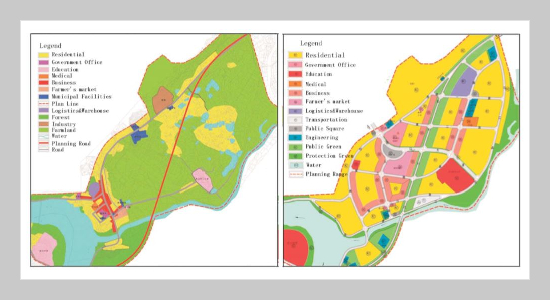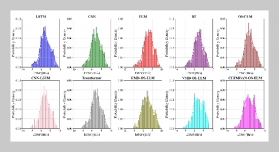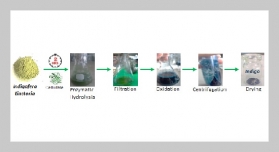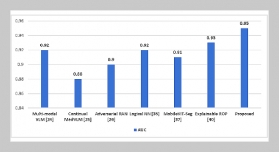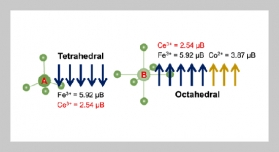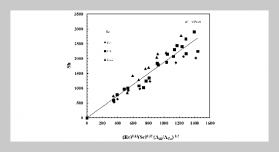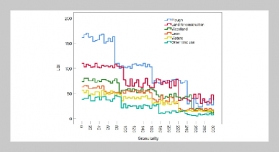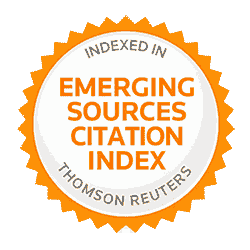REFERENCES
- [1] Palla A., and I. Gnecco (2015) Hydrologic modeling of low impact development systemsat the urban catchment scale, Journal of Hydrology 528, 361�368. doi: 10.1016/j.jhydrol.2015.06.050
- [2] Moglen, G. E. (2009) Hydrology and impervious areas, Journal of Hydrologic Engineering 14(4), 303– 304. doi:10.1061/(ASCE)1084-0699(2009)14:4(303)
- [3] Zhang, W., S. M. Li, and G. Y. Sun (2013) Effect mechanism of urban rainstorm waterlogging formation in China, Urban Development Studies 20(1), 120�122. (in Chinese) doi: 10.3969/j.issn.1006-3862.2013.01. 020
- [4] Meierdiercks, K. L., J. A. Smith, and M. L. Baeck (2010) Analyses of urban drainage network structure and its impact on hydrologic response, JAWRA Journal of the American Water Resources Association 46(5), 12. doi: 10.1111/j.1752-1688.2010.00465.x
- [5] Mejía, A. I., and G. E. Moglen (2009) Spatial patterns of urban development from optimization of flood peaks and imperviousness-based measures, Journal of Hydrologic Engineering 14(4), 416–424. doi: 10.1061/ (ASCE)1084-0699(2009)14:4(416)
- [6] Ogden, F. L., N. Raj Pradhan, C. W. Downer, et al. (2011) Relative importance of impervious area, drainage density, width function, and subsurface storm drainage on flood runoff from an urbanized catchment, Water Resources Research 47(12), 1�12. doi: 10. 1029/2011WR010550
- [7] Davis J. R., J. F. N. Farley, W. J. Young, et al. (1998) The experiences of using a decision support systemfor nutrient management in Australia, Water SceiTechnol 37(3), 209�216. doi: 10.1016/S0273-1223(98)00072-9
- [8] Ventura S. J., and K. Kim (1993) Modeling urban nonpoint source pollution with a geographic information system, Water Resources Bulletin 29(2), 189�1981. doi: 10.1111/j.1752-1688.1993.tb03200.x
- [9] Bicknell, B. R., J. C. Imhoff, J. L. Kittle, et al. (1993) Hydrologic Simulation Program: Fortran User’s Manual for Release 10, Georgia: US Environmental Protection Agency.
- [10] An official website of the United States government. Available online: http://www.epa.gov/nrmrl/wswrd/wq/ models/swmm (accessed on 26 February 2016).
- [11] Yin, S., X. Li, W. Lou, and Y. Jing (2014) Optimal design of city sewage pipe network layout using the gradient screening enumeration method, Journal of Shenyang Jianzhu University (Natural Science) 30(4), 705� 711. doi: 10.11717/j.issn:2095-1922.2014.04.17
- [12] Aad, M. P. A., M. T. Suidan, and W. D. Shuster (2010) Modeling techniques of best management practices: rain barrels and rain gardens using EPASWMM, Journal of Hydrologic Engineering 115(6), 434�443. doi: 10.1061/(ASCE)HE.19435584.0000136
- [13] Lee, S. B., C. G. Yoon, K. W. Jung, and H. S. Hwang (2010) Comparative evaluation of runoff and water quality using hspf and swmm, Water Science & Technology 62(6), 1401. doi: 10.2166/wst.2010.302
- [14] Cong, X. Y., G. H. Ni, S. B. Hui, et al. (2006) Simulative analysis on storm flood in typical urban region of Beijing based on SWMM, Water Resources and Hydropower Engineering 37(4), 64�67. (in Chinese) doi: 10.3969/j.issn.1000-0860.2006.04.021
- [15] Dong, X., J. I. Chen, and D. Q. Zhao (2006) The use of SWMM for the plan of the rainwater pipe network in the city, Water & Wastewater Engineering 32(5), 106� 109. (in Chinese) doi: 10.3969/j.issn.1002-8471.2006. 05.033
- [16] Chen, L. Q. (2010) A study of the suitability of SWMM to plan and design the rainwater pipe network in the town, Water & Wastewater Engineering 36(5), 114�117. (in Chinese) doi: 10.3969/j.issn.1002-8471. 2010.05.040
- [17] Wang, Y., X. Y. Hhao, X. X. Ji, et al. (2012) Application of SWMM to drainage system plan in mountain city, China Water & Wastewater 28(18), 80�83. (in Chinese) doi: 10.3969/j.issn.1000-4602.2012.18.021
- [18] Wang, L., and Y. W. Zhou (2009) Study on POS multi-objective calibration of SWMM, China Water & Wastewater 25(5), 70�74. (in Chinese) doi: 10.3321/ j.issn:1000-4602.2009.05.019
- [19] Lin, S. S., Y. P. Liao, and S. H. Hsieh (2010) A pattern-oriented approach to development of a real-time storm sewer simulation system with a SWMM model, Journal of Hydrologic Information 12(4), 408�423.
- [20] Yao, L., L. D. Chen, and W. Wei (2017) Exploring the linkage between urban flood risk and spatial patterns in small urbanized catchments of Beijing, China, International Journal of Environmental Research and Public Health 14(3), 239. doi: 10.3390/ijerph14030239
- [21] Huang, G. R., J. Huang, H. J. Yu, et al. (2011) Secondary development of storm water management model SWMM based GIS, Water Resources and Power 29(4), 43�45. doi: 10.3969/j.issn.1000-7709.2011.04.014
- [22] Cao, X. S., J. Liu, T. Liu, et al. (2010) Optimal design of stormwater drainage system based on enumeration algorithm, China Water & Wastewater 26(7), 37�39. (in Chinese)
- [23] Geng, S. Y. (2012) The application of max-flow in the city sewer system, Bulletin of Science and Technology 28(4), 20�21+24. (in Chinese) doi: 10.3969/j.issn. 1001-7119.2012.04.007
- [24] Jiang, Y. F., S. L. Zhang, Q. L. Zeng, et al. (2005) Research on GIS spatial data model of urban drainage pipe network, Progress in Natural Science 15(4), 465� 471. (in Chinese) doi: 10.3321/j.issn:1002-008X. 2005.04.013


